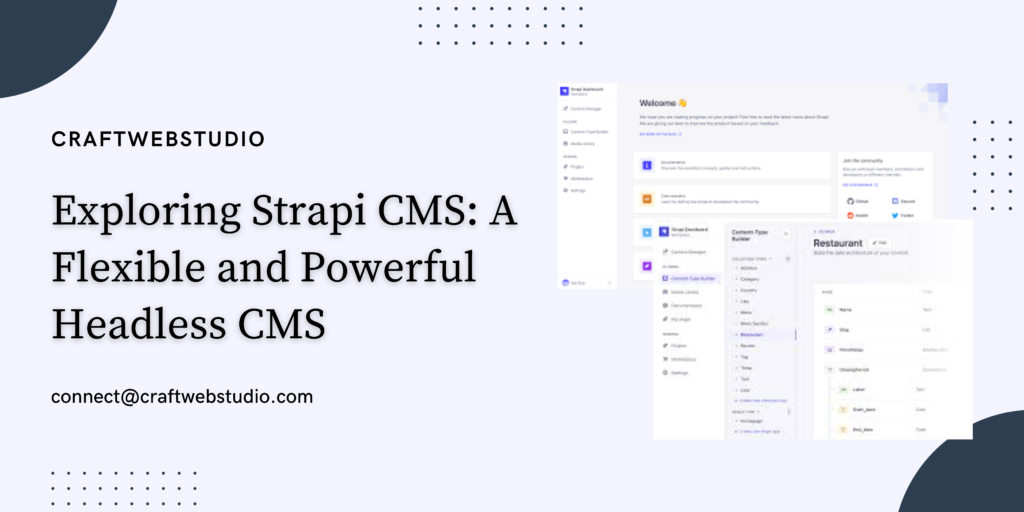In the ever-evolving world of web development, the choice between a static or dynamic website is a pivotal decision for establishing a robust online presence. Grasping the nuances between these two approaches is a must for businesses and individuals venturing into the digital realm.
This article delves into the intricate details of static and dynamic web frameworks, exploring their advantages, differences, and best use cases. Whether you’re embarking on a new website creation or contemplating a switch, this guide is your practical companion, equipping you with the necessary information to make an informed decision tailored to your specific needs and goals.
What is Static Website?
A static site is a type of site comprised of static web pages. These pages are built using HTML (Hypertext Markup Language) and CSS (Cascading Style Sheets), which determine the layout and structure of the site. These pages present information clearly and don’t change until they are manually updated.
It has constant fixed content, showing the same information for every user. Static websites are great for situations when there is no need to update content regularly or offer interactive features.
Features of Static Website
- Fixed Content: The content on a static site remains constant, unless it is manually modified. That means any modifications or modifications to the content will require modification of your HTML as well as CSS code.
- Limited Interactivity: Static websites typically don’t allow interaction with users or personalization of experiences. Visitors can only navigate the pre-defined pages and view the content that is displayed.
- Fast loading speed: As static websites do not need any database or server processing, they typically load faster. This could result in a better user experience for those with slower internet connections.
- Simplified Maintenance: Updates to static websites require hand-editing of HTML and CSS files. This can be accomplished using an editor for text or a website development software. However, it will require some knowledge of HTML and CSS programming.
Advantages of Static Website
- Simple: Static websites are easy to build and maintain. They require only basic HTML and CSS abilities, making them suitable for those new to the field or people with less knowledge of technology.
- Cost-effectiveness: Static websites are typically more affordable to build and host since they don’t need server-side scripting languages or databases.
- Fast loading speed: Because static websites are comprised of fixed HTML pages, they can have speedy loading times. This will improve the user experience and decrease bounce rates.
- Security: Static websites are usually viewed as having lesser security risks because they do not depend on database scripting or server-side scripting. However, the best security practices should be followed.
[Also Read: 8 Advantages of Static Websites for Small Businesses]
Disadvantages of Static Website
- Limits Interactivity: Static Websites lack interactivity and personal experiences. They do not offer features such as authentic user accounts, live updates, or dynamic content creation, which can limit users’ engagement.
- Manual Updates: Making modifications to static websites involves manually editing the code. This can take a long time and could require technical expertise. Adding or updating content on several pages is an overwhelming task.
- Scalability Issues: When the content on static websites grows, managing and updating the site becomes more challenging and lengthy. Each page has to be maintained individually, which could be inefficient and impact the site’s scalability.
- SEO Restrictions: Static websites may encounter issues in SEO optimization. Each page has a set address and contents, restricting the possibility of optimizing each page for a specific keyword or user’s intention.
Examples of Static Website
- Corporate Profiles: Websites with static content provide details about a company, such as its history, team members, services, and contact details.
- Personal Portfolios: Writers, artists, photographers, and many other creative professionals can use static websites to showcase their work and achievements.
- Event Info: This static website provides information on upcoming events, conferences, or seminars. It provides static information about the schedule, speakers, and registration with no interactive elements.
What is Dynamic Website?
A dynamic website can be described as an interactive and living web-based entity. Contrary to static websites one that is dynamically developed using programming languages and databases for storing and retrieving data. It permits interaction between users as well as personalized experiences.
In simple terms, think of an online platform where users can register accounts, log in, and communicate with one another. The kind of website you have to use requires the ability to be dynamic. A dynamic website will display different types of content to other users according to what they prefer or do.
Features of Dynamic Website
- Interactivity: Dynamic websites allow customers to use the website and submit forms, make comments, or even participate in discussions. They provide individualized experiences tailored to the user’s needs.
- Real-time updates: Dynamic websites show real-time data that changes according to various factors, such as user inputs or data from external sources. For example, an online news site that updates its content automatically when news stories are published.
- Content Management Systems (CMS): Dynamic websites typically use content management systems such as WordPress, Joomla, or Drupal. These CMS platforms offer users user-friendly interfaces for managing and updating website content without the need for programming expertise.
- Database Integration: Dynamic websites use databases to store and retrieve data. This facilitates effective data administration, such as maintaining customer profiles, product details, or forum discussions.
Advantages of Dynamic Website
- Content Management: Dynamic websites provide the benefits of CMS for managing content (CMS), making it easier for non-technical users to modify and manage content on websites. This makes it easier to manage content updates and decreases dependence on developers.
- Personalization: Dynamic websites can give users a personalized experience by tailoring content according to user preferences, actions, data, or even the information stored in a database. This improves user satisfaction and engagement.
- Interactivity: Dynamic websites permit users to interact with features such as user registration and login systems, commenting, and real-time content updates. These features increase user engagement and facilitate two-way communication.
- Search engine optimization (SEO): Dynamic websites can be more SEO-friendly because they generate responsive URLs, tags, and other content based on input or database modifications. This could improve the search engine visibility and traffic.
Disadvantages of Dynamic Website
- Developer Complexity: Dynamic websites require more advanced development skills and an understanding of server-side scripting languages, databases, and CMS platforms. This complexity could increase the time and cost of development.
- High Maintenance Needs: Dynamic websites involve managing databases, server-side scripts, and CMS systems. Regular maintenance is essential for proper operation and security, and it may require ongoing time and money.
- Security risks: Dynamic websites may pose greater security risks because they use database scripting on servers, server-side scripting, and user input. Appropriate security measures, such as input validation and safe coding practices, should be in place to guard against vulnerabilities that could be uncovered.
- Potential performance issues: Dynamic websites can be prone to performance issues if not appropriately optimized. If not adequately managed, utilizing server-side scripts and databases may create additional processing times and slow loading speeds.
Examples of Dynamic Website
- Online-commerce Store: A dynamic site that allows users to shop and buy products using real-time inventory management and customized suggestions.
- Social Networking Website: A dynamic website that lets users connect to share content, post updates, and have conversations using features such as notifications and RSS feeds for news and interaction.
- Online forums: Dynamic websites where users can talk about subjects, start threads, and participate in discussions through real-time updates and search capabilities.
- Booking and Reservation Systems: Dynamic websites that let customers find the availability of rooms, book reservations, and get real-time confirmations for restaurants, hotels, and locations for events.
Difference between Static and Dynamic Website
By understanding the differences between Static and Dynamic website, you can make an informed decision about which approach is best for your website.
Frequently Asked Questions
Rest assured, you’ll find answers to your most pressing questions and a clear explanation of the difference between dynamic and static websites. This will enable you to navigate the best option for your online presence with confidence and ease.
1. What is a static website?
A static website is a collection of pages that remain unchanged until a programmer manually modifies them. Each page is created and stored on servers, providing the same information to every user. These websites are typically built using HTML and CSS, without any database integration or dynamic features.
2. What is a dynamic website?
A dynamic website produces content on the fly which allows users to customize their experience according to various variables like user input such as browser type, user input, or the history of a session. Content is usually taken from databases and reassembled dynamically, providing instant updates and personalized interactions.
3. What is the difference between a static and dynamic website?
The major distinction between static and dynamic websites is in their content delivery as well as interactivity. Static websites provide the same content to everyone. Contrary to dynamic websites, they produce content in a dynamic manner, allowing customized experiences and real-time updates.
4. What is an example of a dynamic website?
Imagine a dynamic site as a virtual personal shopper, like the ones you find on e-commerce giants like Amazon and eBay. These sites adapt their recommendations, prices, and promotions based on your browsing history and preferences, offering a personalized shopping experience.
5. What is an example of a static website?
A typical static site is a small-sized business website that has fixed content, like the menu of a restaurant’s website or a portfolio that showcases the work of an artist. Websites like these offer information to users, but they do not alter information based on interactions with users or the data.
Conclusion
When deciding whether to go with a static or dynamic website, it is crucial to consider your project or business’s particular requirements and objectives. In the end, the choice between a static or dynamic site is based on various factors, including the nature of your company, the functionality you want, the requirement for regular updates to content, the existing resources, and the technical knowledge.
It is crucial to review these elements and then select the one that best suits your needs and goals.






